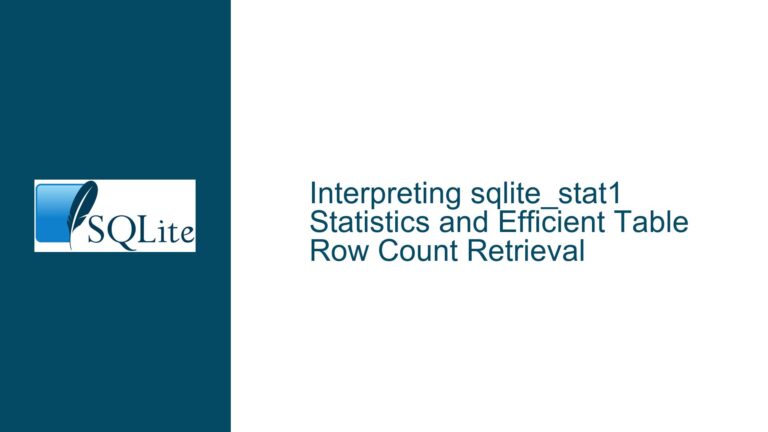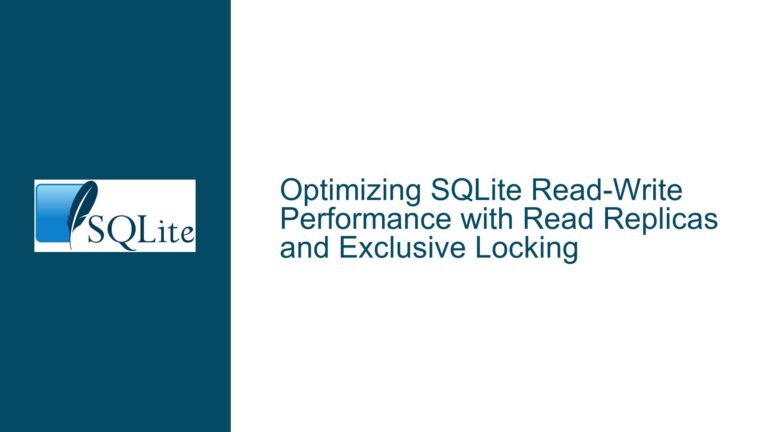Benchmarking SQLite Versions: Challenges and Solutions for Accurate Performance Comparison
Benchmarking SQLite Versions with LumoSQL: Understanding the Process
Benchmarking SQLite versions is a critical task for developers and database administrators who need to evaluate the performance of different SQLite releases under specific workloads. LumoSQL provides a robust framework for conducting these benchmarks, but the process is not without its challenges. The primary goal of benchmarking is to compare the performance of SQLite versions, such as 3.14.15, 3.20.1, 3.25.2, and 3.33.0, to identify improvements, regressions, or anomalies in performance metrics. LumoSQL achieves this by executing a series of predefined tests and storing the results in a database for later analysis.
The benchmarking process begins with the installation of LumoSQL, followed by the execution of the make benchmark command with specific target versions. The results are stored in a database, which can be queried and compared using the benchmark-filter.tcl tool. This tool allows users to filter and compare results based on various criteria, such as specific SQLite versions or run IDs. The ability to aggregate results from multiple systems and users is a key feature of LumoSQL, making it a valuable tool for large-scale performance analysis.
However, the process is not entirely straightforward. There are several caveats and limitations that users must be aware of. For instance, LumoSQL does not currently collect build-time options, which can significantly impact performance. Additionally, the system information collected by the benchmarking tool is limited, and there is room for improvement in terms of system identification and data collection. These limitations can affect the accuracy and reliability of the benchmarking results, making it essential to understand the underlying issues and potential solutions.
Potential Causes of Inaccurate Benchmarking Results
One of the primary causes of inaccurate benchmarking results is the lack of build-time options in the collected data. SQLite’s performance can vary significantly depending on the build configuration, such as the use of specific compile-time flags or optimizations. Without this information, it becomes challenging to compare results across different systems or builds accurately. For example, a build with -DSQLITE_ENABLE_STAT4 enabled might show different performance characteristics compared to a build without this flag. This missing data can lead to misleading conclusions about the performance of different SQLite versions.
Another potential cause of inaccuracies is the limited system information collected during the benchmarking process. System-specific factors, such as CPU architecture, memory size, and disk speed, can have a significant impact on SQLite’s performance. If these factors are not adequately captured and accounted for, the benchmarking results may not be representative of the actual performance differences between SQLite versions. For instance, a benchmark run on a high-end server with fast SSDs might yield different results compared to a run on a low-end laptop with a mechanical hard drive.
The lack of support for non-Unix systems is another limitation that can affect the benchmarking process. SQLite is a highly portable database engine, and its performance can vary across different operating systems and environments. Without support for non-Unix systems, the benchmarking results may not be comprehensive or representative of SQLite’s performance in diverse environments. This limitation can be particularly problematic for organizations that rely on SQLite in mixed-OS environments.
Finally, the absence of options for hot/cold runs can also impact the accuracy of benchmarking results. SQLite’s performance can vary depending on whether the database is already cached in memory (hot) or needs to be read from disk (cold). Without the ability to control for this factor, the benchmarking results may not accurately reflect real-world performance scenarios. For example, a benchmark run on a cold database might show slower performance compared to a hot run, even if the underlying SQLite version is the same.
Implementing Robust Benchmarking Practices with LumoSQL
To address the challenges and limitations of benchmarking SQLite versions with LumoSQL, several steps can be taken to improve the accuracy and reliability of the results. The first step is to enhance the data collection process to include build-time options. This can be achieved by modifying the benchmarking tool to capture and store the compile-time flags used for each SQLite build. By including this information in the database, users can ensure that their comparisons are based on like-for-like builds, reducing the risk of misleading results.
Another important step is to expand the system information collected during the benchmarking process. This can include details such as CPU architecture, memory size, disk type, and operating system version. By capturing this information, users can account for system-specific factors that might impact performance. For example, a benchmark run on a system with a fast SSD can be compared to a run on a system with a mechanical hard drive, with the differences in disk speed taken into account. This level of detail can help users make more informed decisions based on the benchmarking results.
Support for non-Unix systems is another area that requires attention. While LumoSQL is designed to be as portable as SQLite and TCL, there are still gaps in its support for non-Unix environments. To address this, the benchmarking tool can be extended to include support for additional operating systems, such as Windows and macOS. This would involve adapting the system-specific components of the tool, such as the TclX module, to work across different platforms. By expanding the tool’s compatibility, users can ensure that their benchmarking results are representative of SQLite’s performance in diverse environments.
Finally, the addition of options for hot/cold runs can further enhance the accuracy of benchmarking results. This can be achieved by modifying the benchmarking tool to include options for controlling the cache state of the database. For example, users could specify whether the benchmark should be run on a cold database (cleared from memory) or a hot database (cached in memory). By providing this level of control, users can ensure that their benchmarking results reflect real-world performance scenarios, where the cache state of the database can have a significant impact on performance.
In addition to these steps, it is also important to consider the aggregation and validation of benchmarking results. LumoSQL is working on a tool to aggregate databases from multiple users and systems, which will be made available for public submissions. This tool will include checksums for each database run to ensure data integrity. By implementing robust validation and aggregation processes, users can have greater confidence in the accuracy and reliability of the benchmarking results.
In conclusion, benchmarking SQLite versions with LumoSQL is a powerful tool for evaluating performance, but it is not without its challenges. By addressing the limitations in data collection, system information, platform support, and cache state control, users can improve the accuracy and reliability of their benchmarking results. These enhancements will enable more informed decision-making and help users get the most out of their SQLite deployments.






